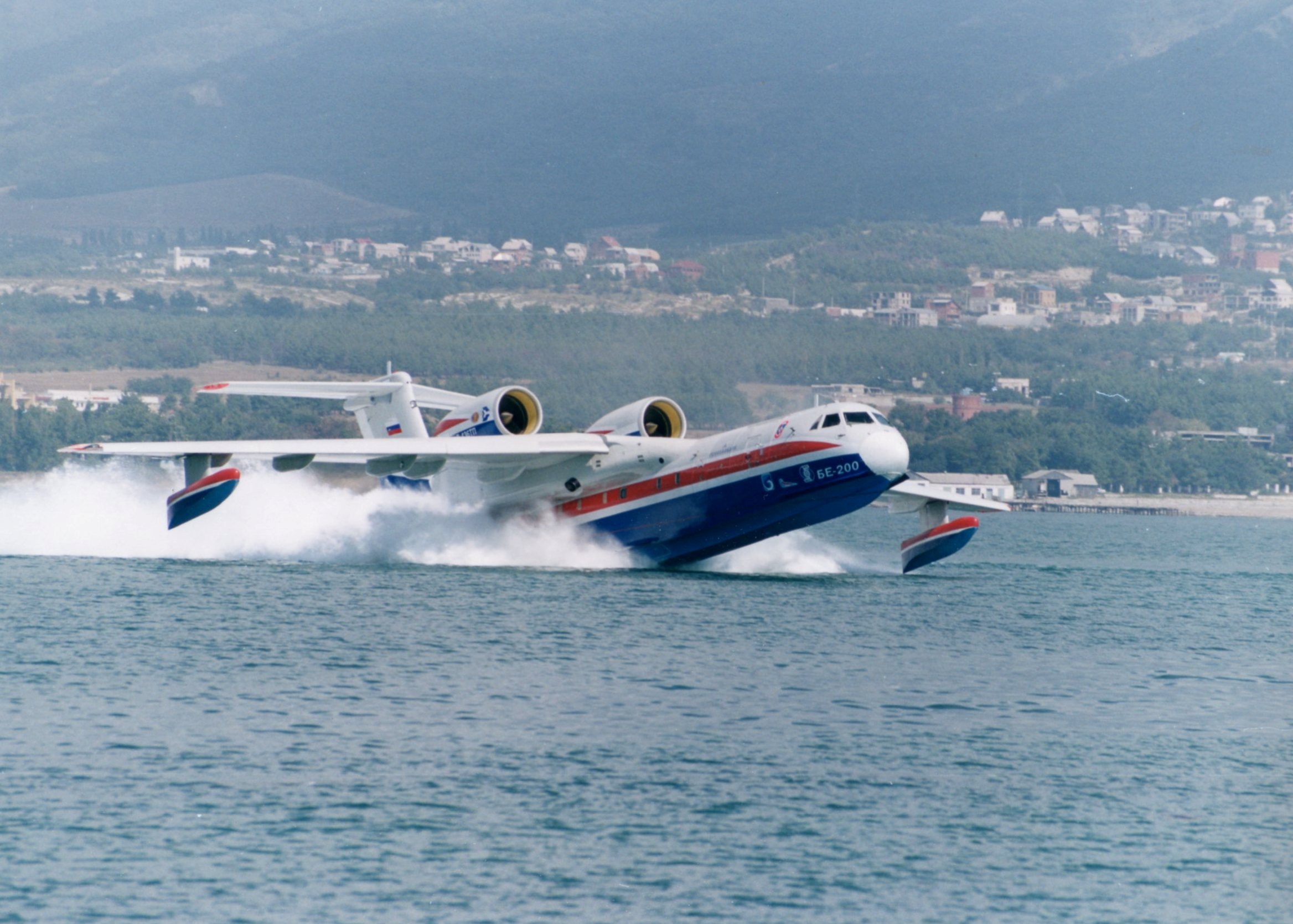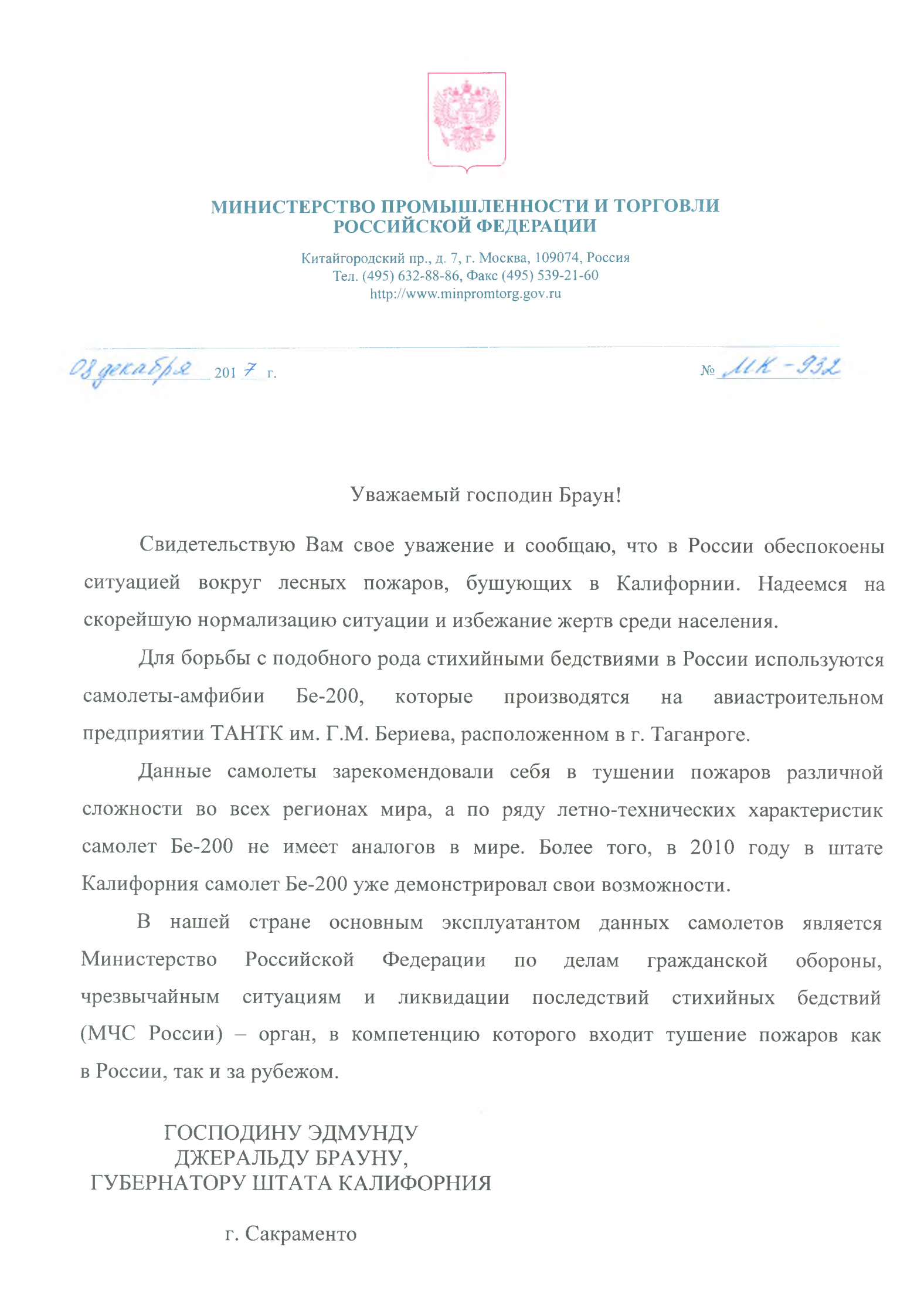Russia to the Rescue in Thomas Fire?
Why the Federal Government Shot Down Plans to Bring Russian Supertankers to Town

At 4 a.m. on Friday, December 8, as the Thomas Fire bore down on Ventura and four other wildfires ripped through the state, David Baskett, a Santa Maria Public Airport District director, got a call from a Russian Federation official offering the services of his country’s giant firefighting airplanes to augment Cal Fire’s busy fleet of helicopters and tankers. Minister of Trade and Industry Denis Manturov had also sent a letter to Governor Jerry Brown’s office and, the Russian official said, opened lines of communication with FEMA, the U.S. Federal Emergency Management Agency.
“We in Russia are worrying about [the] situation with the extensive forest fires occurring in California,” Manturov wrote in his letter to Brown, a copy of which Baskett provided to the Independent. “To fight such disasters in Russia we use the Be-200 [amphibious] aircraft manufactured by Taganrog-based Beriev Aircraft Company. These aircraft proved to be effective for fighting fires of various complexity worldwide, and in terms of flight/technical performance, the Be-200 aircraft has no equivalents in the world.”

The offer didn’t come completely out of the blue. Baskett, who also operates the private aviation consulting firm International Emergency Services, has worked for the better part of a decade to bring the water-scooping Russian Be-200s to the Santa Maria Public Airport, a Central Coast base for firefighting aircraft. Similar proposals have been made over the years, Baskett said, but this one came with a greater sense of urgency as the Thomas Fire was actively consuming hundreds of homes and quickly growing to become the second-largest fire in modern California history.
“The Santa Maria Airport is fully operational and able to accept anything the Forest Service or Cal Fire wants to bring in, as long as the aircraft meets the category of aircraft we are designed for,” Chris Hastert, Santa Maria Public Airport general manager, told the Santa Maria Times, who first reported on Russia’s offer. “The Be-200 definitely falls within our design category.”
Believing FEMA was on board with the idea and speaking directly with the Russian Federation’s Ministry for Civil Defense, Emergencies and Elimination of Consequences of Natural Disasters (EMERCOM), Baskett started the ball rolling on the logistics. He contacted Cal Fire chiefs, booked rooms for the Russian pilots at the Santa Maria Radisson, and expected arrivals as soon as the following week. But a cease-and-desist email from a FEMA attorney threw cold water on his plans.
“I have received numerous emails forwarded to me where you have contacted Cal Fire officials claiming that FEMA has accepted offers of assistance from EMERCOM,” J.P. Henderson wrote to Baskett. “I have verified with our HQ International Affairs office that these claims are false. No offer has been made to FEMA.” Henderson threatened to sic federal authorities on Baskett if he didn’t stop publicly discussing the matter.
“I stand by what I said,” Baskett told the Independent this week. He said he’s tried repeatedly to confirm FEMA had in fact received a formal offer from EMERCOM by contacting the FEMA official who’d reportedly been in touch with the Russians, Deputy Director of International Affairs Andrew Slaten. Baskett said he’s received no response from Slaten.
Speaking on behalf of Cal Fire and Governor Brown’s office, Janet Upton said the state currently doesn’t have a need for additional emergency aircraft. “We have a fleet of over 90 aerial firefighting aircraft at our disposal in Southern California, including the DC-10 and 747,” she said. “We don’t have any aircraft orders being unfilled.” Even if there were a need for Be-200s, Upton went on, Russian officials must make their offer through the proper official channels. “They have been advised on what the process is,” she said. A FEMA spokesperson said that process involves the agency’s International Affairs Office.
Baskett acknowledged that right now — as the Thomas Fire continues to burn dangerously close to Santa Barbara and Ventura homes — might not be the most opportune time to coordinate a complicated emergency aid relationship with a foreign government at diplomatic odds with the United States. Nevertheless, he said, the offer should be seriously considered, as Be-200s could save property and lives during the next wildfire.
The planes, which carry more water than any of their U.S. counterparts, have been deployed around the globe, including in Israel, Spain, France, and Indonesia. They’re a backbone of Russia’s firefighting force, which routinely battles massive wildfires, like those in 2010 that burned 740,000 acres, killing 54 and causing $15 billion in damages. Baskett laughed at suggestions from others that his Russian connections are conspiratorial. “Yes, I collude with Russia,” he said, “to bring better aircraft here.”



